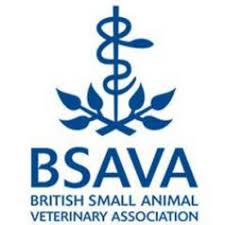Vet Care Plan Integration
Smarter Parasite Control Starts with Testing
Dogs & cats: faecal microscopy and targeted lungworm testing, avoiding unnecessary blanket dosing.
Testing first reduces unnecessary dosing and slows resistance in roundworm, hookworm & lungworm populations.
Minimises exposure to medications when not required—useful for MDR1-sensitive breeds and pets with co-morbidities.
Fewer actives excreted into soil & water; better for invertebrates, wildlife and ecosystems.
Identifies which parasites are present and tailors therapy, avoiding one-size-fits-all protocols.
Shareable lab results justify recommendations and strengthen the vet–client relationship.
Affordable testing for the practice; keeps spend focused on need.
Flags parasites with human health significance (i.e. Toxocara , amongst others) early for prompt action.
Builds local prevalence data to refine protocols and educate clients with real-world evidence.
Set up in minutes
We onboard your team and send your starter pack.
Collect & post
Owners drop off samples; forward once weekly using our tracked return envelopes.
We test quickly
Rapid turnaround with clear, precise reporting.
Act with confidence
Evidence-led recommendations; one monthly invoice.

ESCCAP GUIDELINES DOGS AND CATS
Test 2-4 times per year depending on risk group A, B, C or D. This is the other option to treating as described by ESCCAP.
FREQUENT QUESTIONS
Here are some answers to some of the questions that arise
What does the care plan test detect?
Method: direct smear/wet mount, dual flotation (NaNO₃ & ZnSO₄), sedimentation, Baermann lungworm test.
Detects (routine):
Nematodes:
Toxocara spp., hookworms, whipworm, Strongyloides spp.
Protozoa:
Coccidia (Cystoisospora/Isospora) in dogs & cats; we flag Giardia/Cryptosporidium and recommend antigen/qPCR where appropriate.
Tapeworms:
Ecchinococcus spp., Taenia spp., Dipylidium caninum. Given the lower sensitivity of tapeworm detection on faecal analysis, periodic treatment with praziquantel may be considered.
Lungworm: Angiostrongylus/Aelurostrongylus L1 via Baermann.
What are the limitations?
Intermittent shedding & prepatency: a negative is a point-in-time result, not absolute exclusion; repeat or switch modality if suspicion remains.
Lungworm: Baermann improves sensitivity but does not rule out disease; add antigen/qPCR or treat if clinical suspicion is high.
Results require veterinary interpretation; POM-V prescribing follows clinical exam. A test is a time-point: some parasites shed intermittently; early infections may be prepatent.
Tapeworm eggs are poorly detected on routine copro (see “What about tapeworms?” below).
Baermann improves lungworm detection but a negative does not exclude disease.
Outside the faecal screen, what should we cover and how?
The care plan test is test-first for endoparasites. Many clinics retain ectoparasite cover and apply targeted tapeworm treatment.
Fleas/ticks (no nematocide onboard):
Dogs: Fluralaner (Bravecto® q12w) or monthly Sarolaner/Lotilaner/Afoxolaner.
Cats: Fluralaner (Bravecto® Cat q12w) or monthly Lotilaner (Credelio® Cat).
(Avoid routine nematocide combos—e.g., NexGard Spectra®, Advocate®, Stronghold Plus®—on the test-first track.)
Endoparasites (nematodes/lungworm):
Quarterly screen. If positive—or if clinical suspicion between screens—treat precisely per SPC and consider confirmatory antigen/qPCR.
Risk-based exceptions (prefer prevention over test-only):
Puppies/kittens, pregnancy, recent imports, high public-health-risk households, very high exposure (raw offal, heavy fox/snail scavenging, working/kennel dogs). Step up to monthly prevention or testing per risk/ESCCAP.
What about tapeworms?
Routine copro is poor at detecting cestodes. We’ll report eggs/proglottids if seen, but absence ≠ exclusion.
Best practice alongside test-first: use praziquantel at intervals matched to lifestyle (e.g., q3 months for hunters/raw-fed/scavengers; less for low-risk indoor pets).
Travel: maintain DEFRA Echinococcus requirements (dogs treated 1–5 days pre-GB re-entry).
If owner reports segments or suspicion is high → treat, and consider coproantigen/qPCR where available.
How do we send the samples?
Kit provided: pot, label, submission form, tracked return envelope (ParasiteVet covers postage/admin).
Sample: fresh faeces 15–20 g (walnut-sized). Avoid litter contamination. Label pet/owner/date/time.
Storage: refrigerate (2–8 °C) if delay; do not freeze. Optional 24–48 h pooled sample can improve detection for intermittently shedding protozoa/larvae.
TAT: typically 2 working days from lab receipt. Standardised report with action prompts.
Samples are collected and sent to us on a Friday
Clinic cut-off: have samples at reception by Thu close.
Dispatch: weekly Friday batch via our tracked labels.
Late/urgent cases: hold chilled for next Friday or contact us for ad-hoc dispatch.
WHY TEST WITH US?
Results are interpreted by MRCVS Cert holders with referenced data where applicable
At ParasiteVet, we’re vets first. Our dog and cat care-plan testing is built around clear, precise reports and scientifically robust results that make treatment decisions simple. We put “test first, treat right” into everyday practice with faecal microscopy and targeted lungworm testing, so you treat only when parasites are detected and with the most appropriate product.
By removing unnecessary blanket dosing, you protect anthelmintic efficacy, reduce drug exposure (especially important for MDR1-sensitive breeds and patients with co-morbidities), and lower your environmental footprint by limiting actives released into soil and water. Every report highlights clinical significance and recommended next steps, making it easy to explain findings and build client trust.
With streamlined workflows and in-house expertise, we deliver
rapid turnaround and
predictable pricing that fit smoothly into your care plans. The result is safer, smarter parasite control that keeps pets healthy, clients confident, and your practice on the front foot.
Ready to upgrade your plans? Add faecal microscopy and targeted lungworm testing to your care plans today and make evidence-led parasite control your standard.








